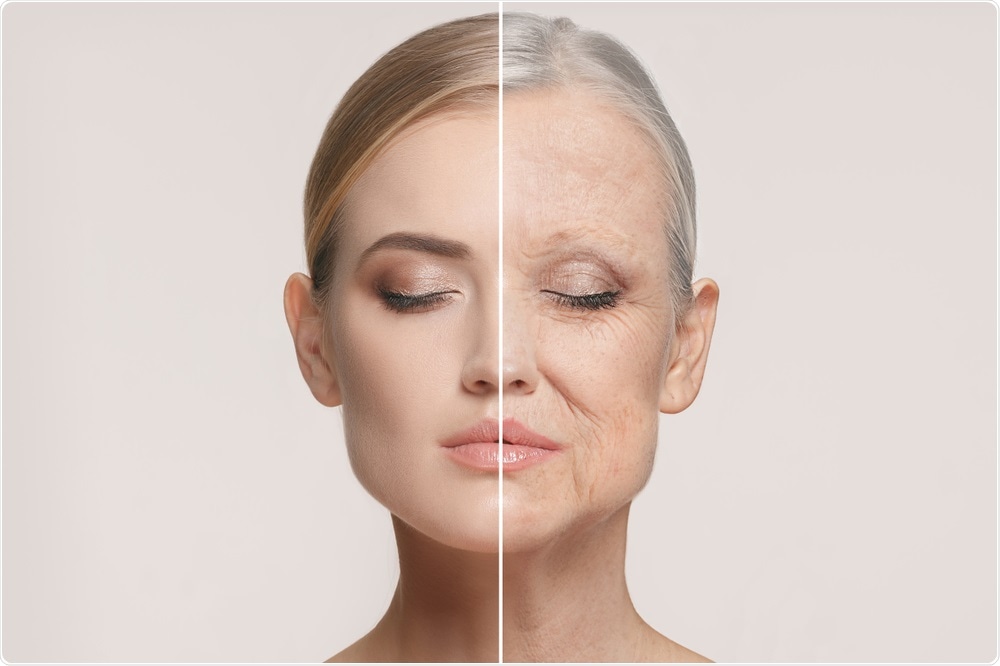While all human beings share analogous changes during aging, like wrinkles, gray hair, and a general drop in function, aging is assumed to be the outcome of a cellular wear-and-tear process caused by accumulated random damage, like structural damage of DNA or genetic modifications.

Image Credit: Master1305/Shutterstock.com
Scientists are still unclear how the disorganized, random damage, which builds up differently among different human beings, and also among different cells of the same individual, ultimately results in the same outcomes.
Many theories have attempted to tackle this enigma and they hold significant implications for individuals’ ability to impact the aging process, making a better and longer life for the elderly. The ability to design treatments for aging relies on interpreting the underlying process of growing old.
A standard method holds that a majority of the cells found in the human body are hardly impaired during aging, whereas only a few “rotten apples”—a small portion of non-functioning cells—are considerably impaired. Consequently, a promising treatment for aging may involve eliminating these few highly-impaired cells.
Around 15 years ago, Professor Jan Vijg had suggested a different method. He proposed that the proper function of all biological tissues may reduce during aging because several cells tend to lose their potential to closely control their genes. According to a theory proposed by Professor Vijg, there are no rotten apples—or single non-functioning cells—on the one hand, but none of the apples is “fresh” on the other hand. Until now, evidence for Professor Vijg’s theory has never been completely presented.
In a research work recently published in the Nature Metabolism journal, scientists from Bar-Ilan University based in Israel reported proof that supports the theory proposed by Professor Vijg, for the first time. Using an innovative method from physics, the team devised a computational technique that measures the level of coordination between various genes.
Using this method, the team quantified the gene activity of each cell and compared the cells collected from young and old subjects, identifying phenomena that were never seen before: old cells lost considerable levels of coordination in comparison to the young cells.
The team then examined the data obtained from over 20 experiments from 6 different laboratories worldwide to test the consistency of this phenomenon. In each case, the researchers observed reduced coordination levels during aging among different kinds of organisms, like mice, humans, and fruit flies, and among different types of cells, such as brain cells, pancreatic cells, hematopoietic stem cells, etc.
In biology it is very difficult to achieve consistent results for different types of cells, tissues, experiments and organisms due to the high sensitivity of equipment and experimental setup.”
Dr Orr Levy, Department of Physics, Bar-Ilan University
Dr. Levy is part of the team of Dr. Amir Bashan from the Department of Physics at Bar-Ilan University.
Our method found the same pattern in more than 20 datasets. Finding evidence for coordination of genes was amazing, but even more outstanding was finding that this property of coordination dramatically declines with age.”
Guy Amit, Department of Physics, Bar-Ilan University
Amit is also a part of Dr. Bashan’s team.
Bashan and group teamed up on the study with Professor Haim Cohen and Professor Sol Efroni from Bar-Ilan University, and also with Professor Yang-Yu Liu and Professor Peter Castadli from Harvard Medical School.
The team also observed a reduced level of coordination in tissues that had a greater level of damage, implying a direct association between coordination breakdown and increased level of damage. The latest findings support the concept that during the aging process, accumulated random damage has an effect on regulation mechanisms and disturbs the potential of genes to coordinate (leading to a general reduction in tissue function), similar to how an orchestra without proper coordination between musicians spoils a symphony.
The study decisively shows the long-speculated link between gene regulation, aging, and somatic damage. The results create new opportunities for studies with practical implications. If the same level of coordination reduction between different genes turns out to be the main cause for aging phenomena, it may be necessary to reassess the ongoing efforts to design new aging treatments.
Source:
Journal reference:
Levy, O., et al. (2020) Age-related loss of gene-to-gene transcriptional coordination among single cells. Nature Metabolism. doi.org/10.1038/s42255-020-00304-4.